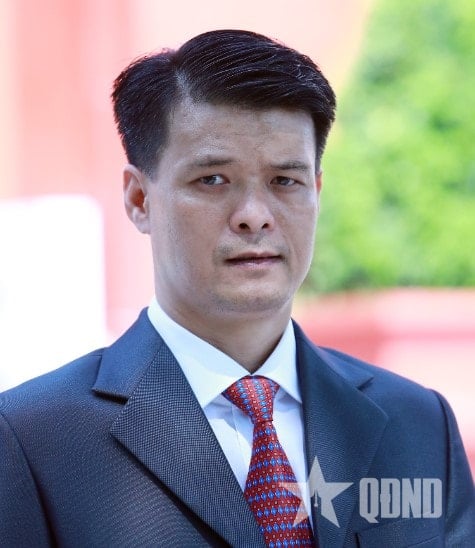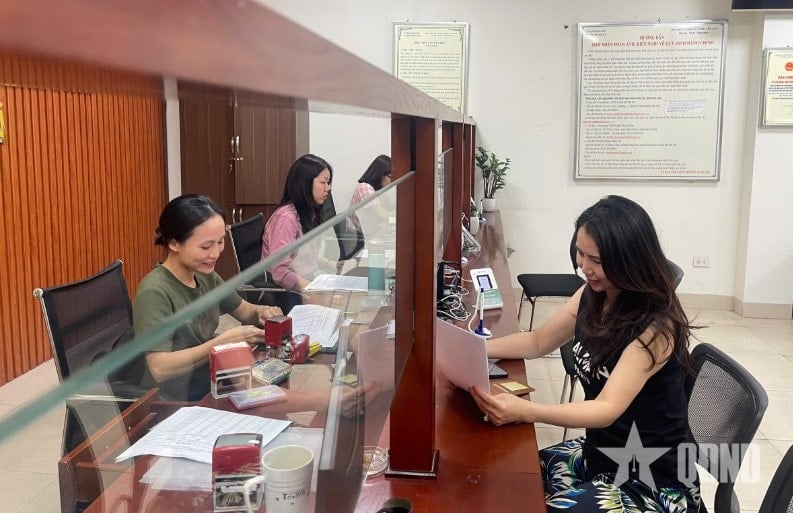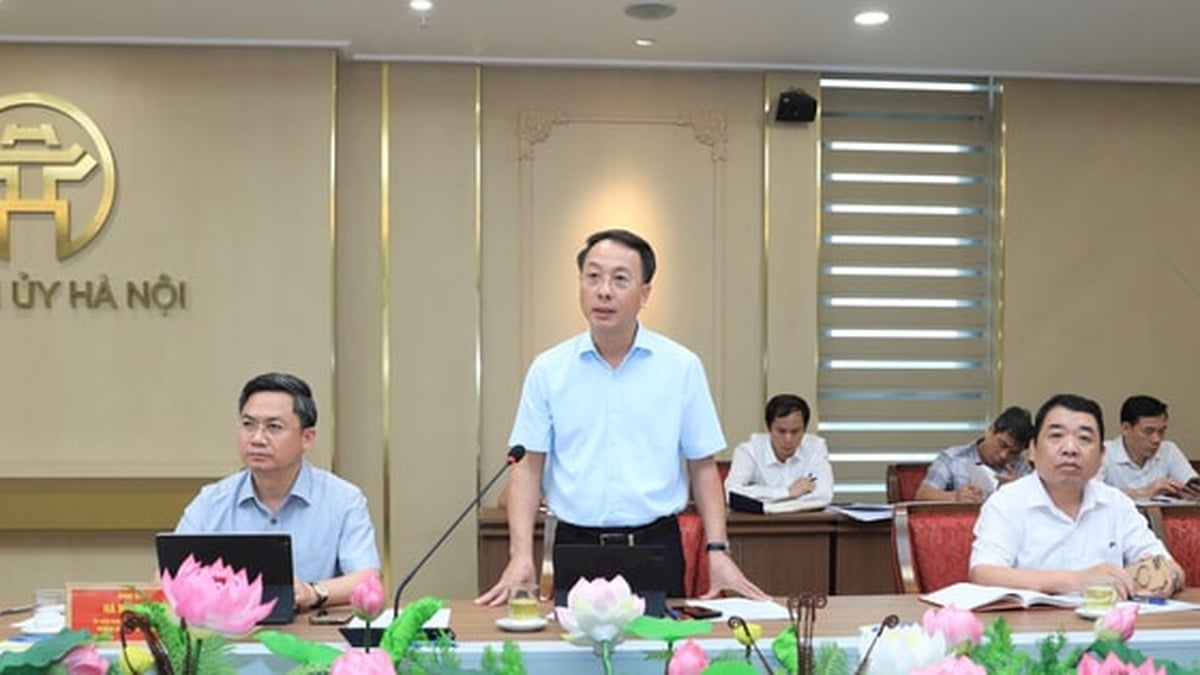Reporter (PV): What do you think about the policy of using KPI to evaluate cadres and civil servants?
Dr. Nguyen Van Dang: We are moving towards a modern administration and public service, so the application of KPI in evaluating cadres and civil servants is necessary, in line with the general trend in the world . With the KPI tool, individuals or units not only know clearly the plans and goals that they need to complete within a certain period of time, the criteria that will be used to evaluate their performance at work, but also manage the progress and progress of task implementation more conveniently and accurately. KPI monitoring also helps unit leaders promptly detect and handle arising issues to achieve the common goals of the agency or unit.
 |
| Dr. Nguyen Van Dang. |
However, KPI itself has its limitations and is not a “panacea” for assessing the performance of officials and civil servants. For example, completing KPI helps individuals and groups meet requirements on quantity and volume of work, but it is not enough to assess the quality and impact of completing assigned tasks.
Therefore, even if an agency or unit has a good set of KPI tools, the evaluation of cadres and civil servants still needs to combine many other factors such as: Self-assessment, assessment by superiors, colleagues and feedback from individuals and organizations that cadres and civil servants directly serve. Thus, evaluating the performance of cadres and civil servants must be a comprehensive, multi-dimensional process, in which KPI is a key tool.
PV: According to you, what needs to be ensured to have a good set of KPI indicators that are useful in evaluating cadres and civil servants?
Dr. Nguyen Van Dang: KPIs are very suitable for the nature and characteristics of private sector operations, so they should be applied very early in enterprises. However, designing and applying KPIs in the public sector will be a big challenge due to the characteristics of the State administrative system. In general, a good set of KPIs must be clear, specific in goals, simple, easy to understand and feasible.
Looking at KPIs, each individual must know that they need to make an effort and that effort, if it brings positive results, will be fairly recognized. Individuals also need to see that completing KPIs will contribute to positive improvements in both the quantity and quality of activities, thereby gradually promoting the development of the agency or unit. This also means that a good set of KPIs will create positive pressure on each individual and group, requiring them to make an effort to be able to complete them. However, it should be noted that the level of challenge of KPIs should be carefully calculated, associated with reasonable and satisfactory expectations, and not set up illusory, unrealistic KPIs.
For the public sector in our country today, to gradually apply KPIs successfully, first of all, we need guidance from competent authorities on building KPIs with common aspects and groups of indicators, suitable for the characteristics of functions, tasks as well as the development level of the administrative system. On that basis, ministries, branches, localities and each administrative unit need to develop more specific KPI sets, suitable for each type of job position as well as the nature of the work, specific professional requirements. KPI assignment, implementation monitoring and evaluation should be carried out by coordination between direct management levels and the organization-personnel department to ensure objectivity, impartiality and transparency in the evaluation.
 |
| People come to handle administrative procedures at the one-stop department of the People's Committee of Hang Ma Ward, Hoan Kiem District, Hanoi City. Photo: KIEU NGUYEN |
PV: In your opinion, what are the advantages and disadvantages and what are your recommendations for building a set of KPI indicators in the context of the current administrative system in our country?
Dr. Nguyen Van Dang: The most obvious advantage is that the entire political system is now aware of the importance of innovating the process and measures for evaluating cadres and civil servants. Accordingly, specific results and products associated with each job position will be valued. In addition, we can also refer to the experience of the private sector and other countries, where KPIs have been applied for a long time.
However, the development and use of KPIs for state agencies and units will also face significant challenges. In reality, many tasks are processed through many stages and many people participate, making it difficult to quantify and clearly define individual responsibilities. In addition, many tasks in the public sector are not easy to measure and quantify into simple product quantities. Many tasks do not simply aim to complete quantitative targets but must pay special attention to the level of social impact and quality of work results.
Therefore, the requirement is to first build separate KPI sets for each type of job position associated with each agency and unit. In addition to functional and competent departments, the KPI building process should have the participation of experts, scientists, and practical managers to ensure quality and applicability in practice. Before being applied on a large scale, KPI sets should be tested in a number of specific units, from which they can be adjusted and perfected.
Using KPI to evaluate cadres and civil servants is a step forward in reforming the public administration system, but for this tool to be effective, it needs to be regularly updated and adjusted so that KPI will truly be an objective measure of each individual's capacity at work.
PV: Does the development of current technology infrastructure help increase the quality and success of KPI tools, sir?
Dr. Nguyen Van Dang: It is clear that our current technological capacity is quite good, which will be very useful in applying KPI to evaluate cadres and civil servants. Modern equipment systems and diverse software can help save time, standardize processes and increase objectivity, publicity and transparency in monitoring and supervising the progress of KPI implementation as well as evaluating cadres and civil servants.
However, we need to be aware that no matter how favorable the technological conditions are, they can only support the KPI application process and cannot replace the quality of the KPI toolkit in evaluating cadres and civil servants. That is, for the evaluation to be accurate, fair and transparent, many conditions are required, the most important of which are: the level of completeness and quality of the KPI tool, the practicality and feasibility of the KPI, the impartiality and objectivity of the evaluator through the KPI... Using KPI in the public sector will face many challenges, but this is an inevitable trend, so we need to persevere and improve step by step towards rationality and science in evaluating the working capacity of individuals and organizations.
PV: Thank you very much!
KIEU OANH (performed)
* Readers are invited to the Readers section to see related news and articles.
Source: https://baodaknong.vn/bo-kpi-tot-se-tao-ap-luc-tich-cuc-va-ghi-nhan-chinh-xac-ket-qua-cong-viec-253372.html




















































![[Maritime News] More than 80% of global container shipping capacity is in the hands of MSC and major shipping alliances](https://vphoto.vietnam.vn/thumb/402x226/vietnam/resource/IMAGE/2025/7/16/6b4d586c984b4cbf8c5680352b9eaeb0)













































Comment (0)